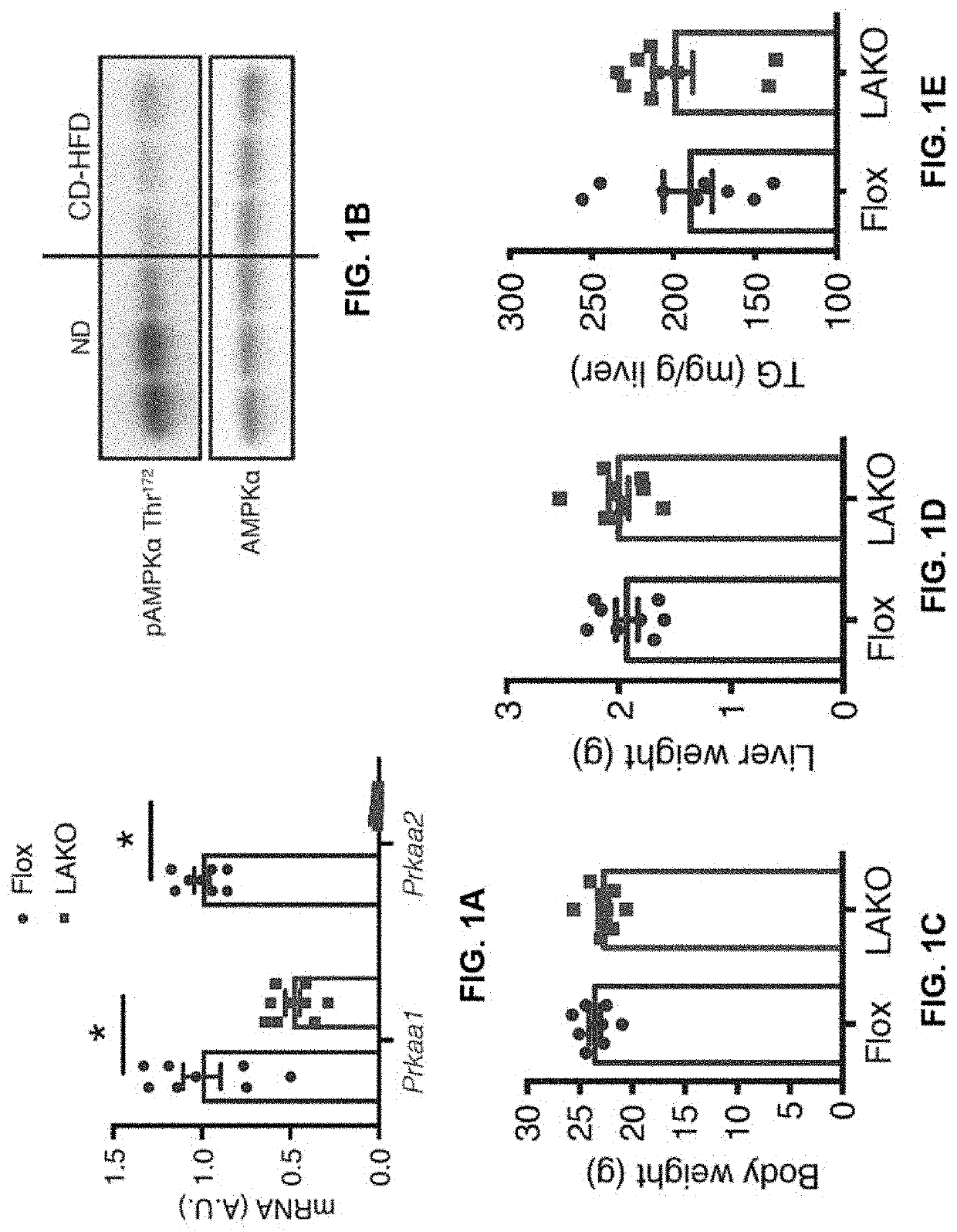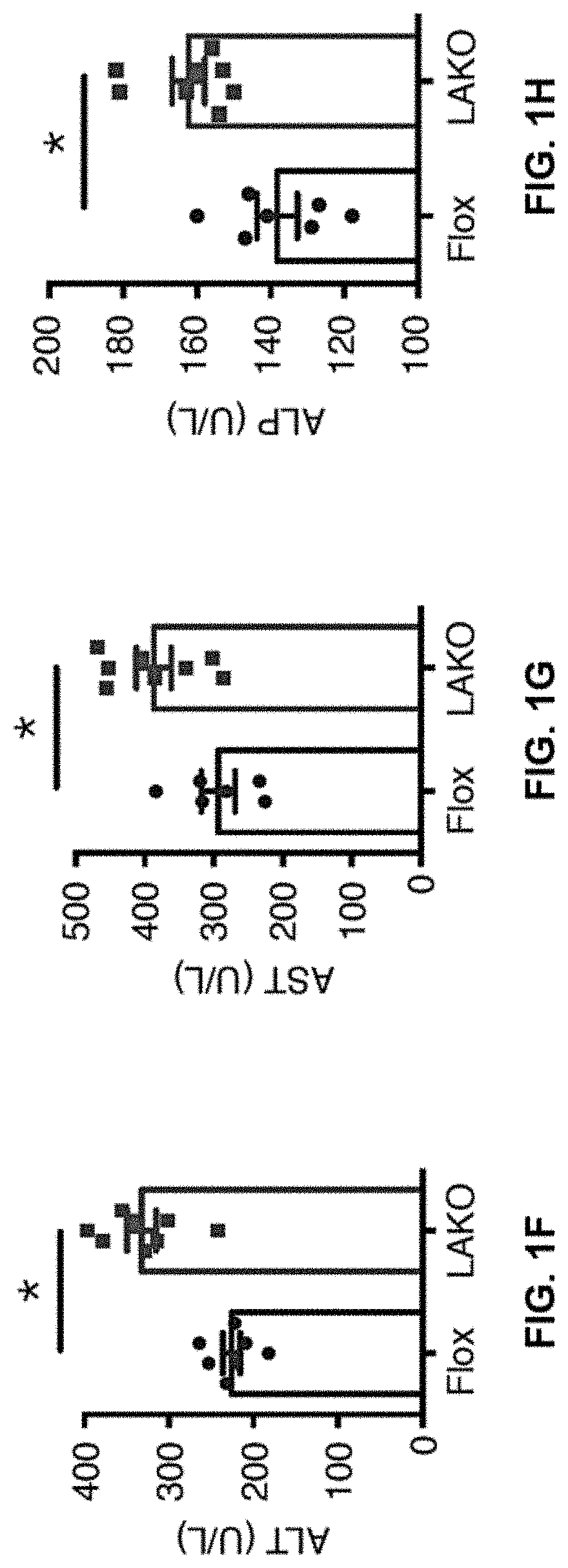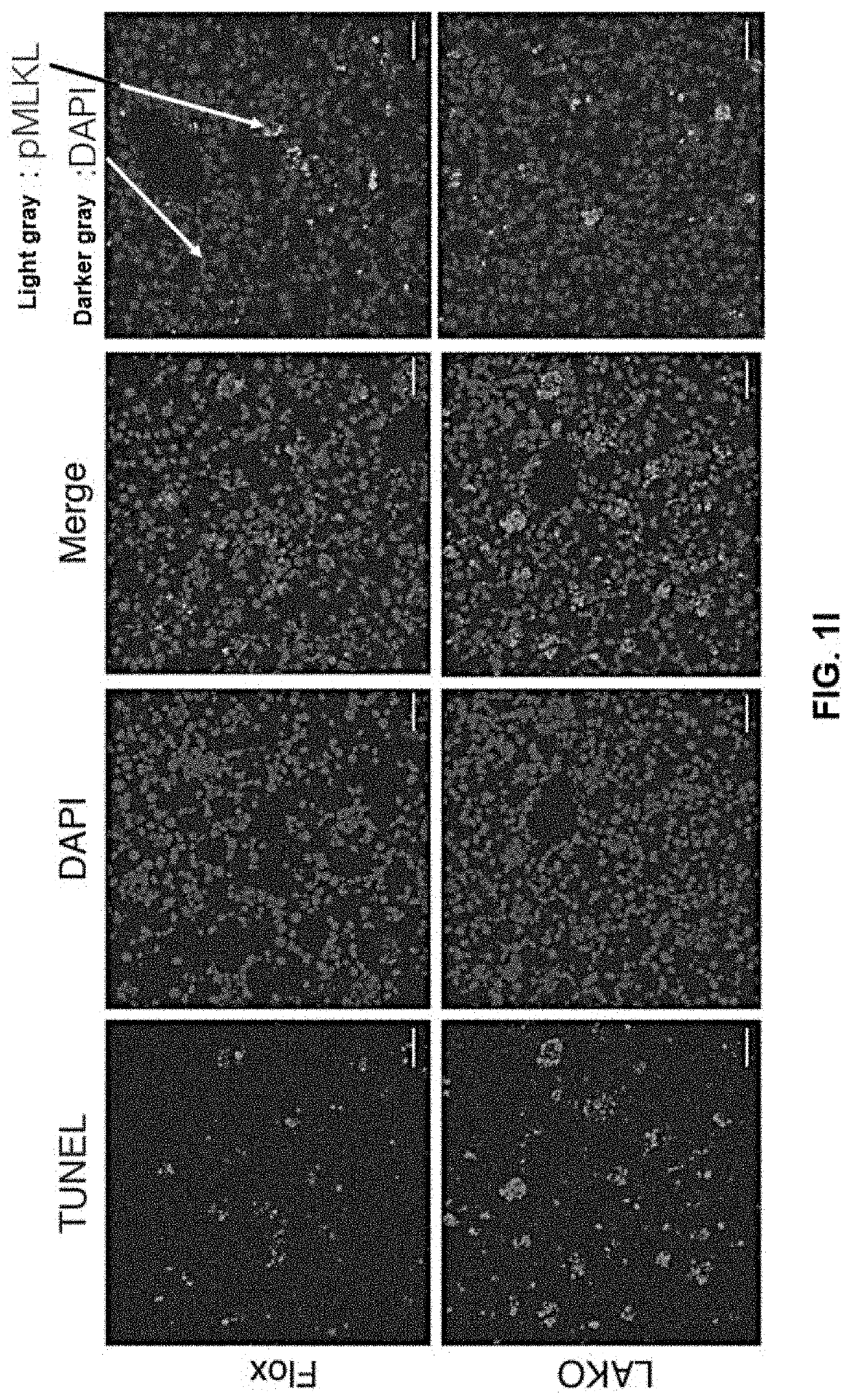Ampk/caspase-6 axis controls liver damage in nonalcoholic steatohepatitis
a technology of ampk and caspase-6, which is applied in the field of nonalcoholic steatohepatitis, can solve the problems of hepatocyte death, progressive fibrosis and cirrhosis, etc., and achieve the effects of preventing liver disease, activating ampk activity, and inhibiting caspase-6 activity
- Summary
- Abstract
- Description
- Claims
- Application Information
AI Technical Summary
Benefits of technology
Problems solved by technology
Method used
Image
Examples
example 1
Materials and Methods
Mice
[0114]Prkaa1fl / fl and Prkaa2fl / fl mice were bred with albumin-cre mice to generate hepatocyte-specific AMPKα1 / α2 double knockout (LAKO) mice in the C57BL / 6J background. During the study, ear tag numbers were used to identify animals. Flox and knockout mice are littermates and cage mates. Researchers performing test and collecting data were blinded during experiments. Animals in each cohort were produced from 20 breeding pairs to minimize the birthdate range. Mice were housed in a specific pathogen-free facility with a 12-h light, 12-h dark cycle, and given free access to food and water, except for fasting period. Mice were used in accordance with the Guide for Care and Use of Laboratory Animals of the National Institute of Health. The protocols were approved by the Institutional Animal Care and Use Committee of (IACUC) of UCSD. Only male mice were used in the study.
[0115]Mice were fed with AMLN diet (Research Diet, Cat. D09100301) consisting of 40% Fat, 20% ...
example 2
Liver-Specific AMPK Knockout Exaggerates Liver Damage in NASH
[0139]Hepatic AMPK activity is suppressed in diet-induced NAFL (9, 13). Although AMPK activation attenuates steatosis, loss of AMPK does not induce steatosis (13). Moreover, the role of AMPK in the pathogenesis of NASH remains uncertain. Liver-specific AMPKα1 / α2 (Prkaa1 / Prkaa2) double knockout (LAKO) mice that are devoid of hepatocyte expression of AMPKα1 and α2, the catalytic subunits of AMPK were generated (FIG. 1A). Liver-specific AMPK ablation did not affect body weight, liver weight, or triglycerides (TG) in mice fed normal chow diet (ND) (FIGS. 7A-7C). ND-fed LAKO mice had normal serum alanine aminotransferase (ALT), aspartate aminotransferase (AST), alkaline phosphatase (ALP) activities and liver morphology (FIGS. 7D-7G).
[0140]Flox and LAKO mice were fed with a choline-deficient, high fat diet (CD-HFD) to rapidly induce hepatic steatosis, liver damage, and fibrosis, characteristics of NASH (16). CD-HFD decreased AMP...
example 3
AMPK Deficiency Increases Caspase-6 Activation to Promote Liver Damage in NASH
[0143]To investigate the mechanism of exacerbated liver damage in NASH, proapoptotic caspases was focused on, as necroptosis was not affected by LAKO. Cleavage of procaspase-6 and caspase-6 activity were increased in livers of LAKO mice on both CD-HFD (FIGS. 2A and 2B) and AMLN diets (FIG. 9A). Casp6 mRNA was not regulated by either diet (FIG. 9B). LAKO significantly increased active caspase-6 (aCasp6) in livers of mice on CD-HFD (FIGS. 2C and 2D) or AMLN diet (FIGS. 9C and 9D). Co-staining of TUNEL and aCasp6 revealed TUNEL-stained nuclei located within cells with aCasp6 (FIG. 2E), correlating caspase-6 activation with hepatocellular death in NASH.
[0144]The temporal relationship of caspase-6 activation and NASH development was examined Symptoms of NASH were apparent by 3 weeks of CD-HFD feeding, as evidenced by development of steatosis, TUNEL staining, and increased activities of ALT, AST, and ALP in seru...
PUM
| Property | Measurement | Unit |
|---|---|---|
| Therapeutic | aaaaa | aaaaa |
Abstract
Description
Claims
Application Information
 Login to View More
Login to View More - R&D
- Intellectual Property
- Life Sciences
- Materials
- Tech Scout
- Unparalleled Data Quality
- Higher Quality Content
- 60% Fewer Hallucinations
Browse by: Latest US Patents, China's latest patents, Technical Efficacy Thesaurus, Application Domain, Technology Topic, Popular Technical Reports.
© 2025 PatSnap. All rights reserved.Legal|Privacy policy|Modern Slavery Act Transparency Statement|Sitemap|About US| Contact US: help@patsnap.com



